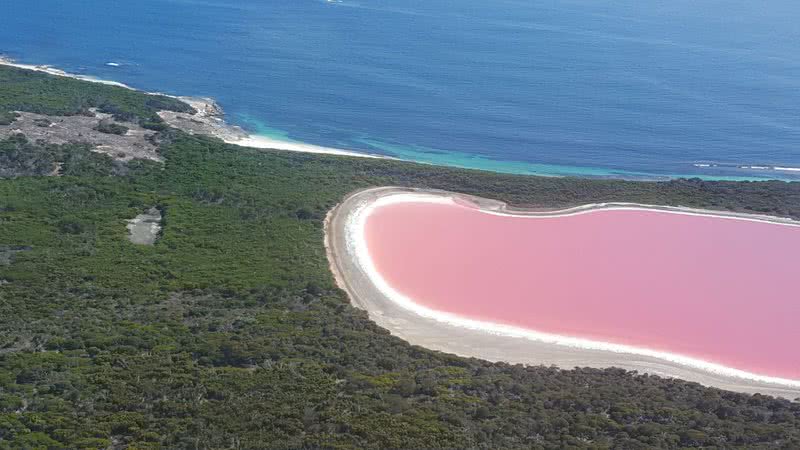a Lake Hillierwhich is located in the Goldfields-Esperance region of Western Australia, displays a file Pink Color Brilliant that, for a long time, intrigued specialists. But recently, thanks to advanced sequencing technologies DNAScience has finally revealed the mystery behind this unique feature.
Scientists Scott Teaguefrom University of Vermontin Burlington, and Ken McGrathFrom Microba, a microbial genomics company in Brisbane, Australia, join forces to solve the mystery of the color of Lake Hillier. They discovered that this phenomenon is the result of a combination of bacteria Colorful seaweed.
metagenomic technique
using metagenomic technology, TigheAnd McGrath He and his colleagues analyzed the collected samples, which included lake water and sediment. This approach, as reported by UOL’s Tilt portal, allows Sequencing all DNA present in one sample. The results revealed the existence of a wide variety of extremophiles, organisms capable of thriving in extreme environments.
According to the source, of the 498 species of extremophiles detected, the two most abundant in Lake Hillier were halophiles, with 249 species, and thermophiles, with 175 species. Among these species, colored microbes have been identified, such as bacteria Salinibacter ruber, which has a reddish-orange color, and the red algae known as Dunaliella salina.
It is the composition of these microbes, along with other possible microbes, that is responsible for the lake’s color variation, as noted Tighe In a statement to “New Scientist” magazine.
colored pigments
But what drives them? Microorganisms Which inhabit the lake to present bright colors? The answer, according to experts, lies in the purple, red and orange pigments these organisms are known for carotenoids;.
These pigments play an important role in providing protection from extreme salinity. It is important to note the salinity of the lake, which is about eight times saltier than the ocean.
The researchers point out that some of the microorganisms detected in Lake Hillier seem new to science, but have not yet been fully characterized. This discovery indicates that there is an amazing microbial diversity in the lake, which plays a major role in its formation pink coloring feature.
Other cases
Those who think that pink is a phenomenon that can only be seen on Lake Hillier are wrong. Although it’s the most famous, there are four other pink lakes in Australia: Field of Pink Lakes, Hutt Lagoon, Pink Lake, and Quairading Pink Lake.
In addition, there are also records of pink lakes in various parts of the world, including South America and Bolivia. Similar cases also occur in lakes and ponds in Azerbaijan, Canada, Spain, the United States, Mexico and Senegal.

“Hardcore beer fanatic. Falls down a lot. Professional coffee fan. Music ninja.”



![[VÍDEO] Elton John’s final show in the UK has the crowd moving](https://www.tupi.fm/wp-content/uploads/2023/06/Elton-John-1-690x600.jpg)


More Stories
The Director of Ibict receives the Coordinator of CESU-PI – Brazilian Institute for Information in Science and Technology
A doctor who spreads fake news about breast cancer is registered with the CRM of Minas
The program offers scholarships to women in the field of science and technology